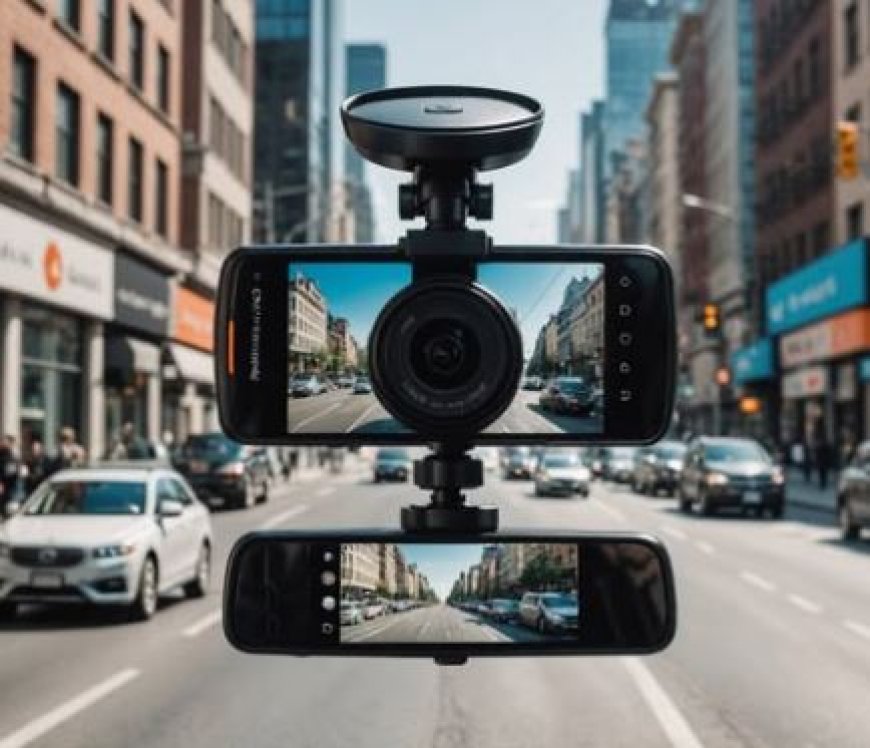Top Truck Cameras to Boost Safety on the Road in 2025
Enhance road safety with this HD truck camera. Get clear footage, night vision, and wide-angle view for better driving security and accident evidence. Easy to install and use.

In the fast-evolving world of commercial transportation, road safety remains a top priority. With increasing regulations, rising insurance costs, and growing awareness around driver accountability, the demand for advanced truck cameras is at an all-time high. As we step into 2025, truck cameras have become more than just accessories—they’re essential tools for ensuring safety, protecting assets, and enhancing operational efficiency.
Truck cameras & dms camera today are equipped with intelligent features that go far beyond simple video recording. From real-time alerts to cloud-based storage and AI-driven analytics, the latest truck cameras are designed to prevent accidents, support driver training, and provide crucial evidence in case of disputes. Here’s a comprehensive look at how truck cameras are boosting safety on the road and what to look for when choosing the right system in 2025.
The Rising Need for Truck Cameras
Modern trucks face a wide range of safety challenges. Long hours on the road, unpredictable driving conditions, blind spots, and distracted motorists can all contribute to accidents. Additionally, fleet managers must ensure that drivers are following protocols and operating vehicles responsibly.
Truck cameras help mitigate these risks by offering constant monitoring and documentation of driving behavior. Whether installed for insurance purposes, legal protection, or driver coaching, they provide a reliable set of eyes both inside and outside the vehicle.
Key Features That Enhance Safety
1. Dual-Facing Cameras
A dual-facing camera setup captures both the road ahead and the driver’s cabin. This is crucial for understanding the full context of an incident. If an accident occurs, footage can show whether the driver was alert, distracted, or responding appropriately. It’s also a powerful tool for coaching and improving driver behavior.
2. Wide-Angle Lenses and Blind Spot Coverage
Trucks have substantial blind spots, especially on the sides and rear. Modern cameras with ultra-wide-angle lenses or multiple side-mounted units significantly reduce these blind spots. This added visibility helps drivers make safer lane changes, merge smoothly, and avoid side-swipe accidents.
3. Night Vision and Low-Light Performance
Many accidents occur during low-visibility conditions like nighttime, fog, or heavy rain. Truck cameras equipped with infrared sensors or enhanced night vision modes ensure clear footage even in pitch-black environments. This capability is vital for 24/7 operations.
4. G-Force Sensors and Incident Detection
Cameras integrated with G-force sensors automatically trigger recordings when a sudden impact or harsh braking occurs. This ensures that critical moments before, during, and after an incident are captured, without relying on manual activation.
5. Live GPS Tracking
While GPS is commonly associated with route navigation, in truck cameras it also plays a role in safety. Managers can track vehicle location in real time, monitor for route deviations, and respond quickly in case of emergencies or breakdowns.
6. Driver Assistance Alerts
Some truck cameras are part of advanced driver-assistance systems (ADAS). These systems offer lane departure warnings, forward collision alerts, and safe following distance notifications. Such features can prevent accidents by warning drivers before danger arises.
The Role of Cloud Storage and AI Analytics
2025 has seen a surge in smart truck camera systems that use cloud storage and artificial intelligence. With AI, these cameras don’t just record—they analyze behavior and flag issues in real-time.
For instance, AI can detect drowsy or distracted driving by tracking head movements and eye activity. It can also recognize unsafe driving patterns, such as speeding, tailgating, or rolling through stop signs. When such behaviors are detected, alerts are sent to fleet managers or even the driver directly.
Cloud-based storage ensures that footage is securely saved and accessible from anywhere. This is especially helpful in legal or insurance disputes where footage needs to be retrieved quickly. It also reduces the risk of data loss due to theft or hardware damage.
Benefits for Drivers and Fleets
While some drivers may initially feel wary of being monitored, truck cameras actually offer a host of benefits for drivers themselves:
- False Claims Protection: Cameras can exonerate drivers from false accident claims, staged crashes, or road rage incidents.
- Training and Feedback: Footage can be used to highlight strengths and correct minor errors, leading to better skills and safer driving.
- Recognition and Incentives: Many companies use footage analytics to reward safe drivers with bonuses or public recognition.
For fleet managers, the advantages are even more expansive. Truck cameras support compliance with safety regulations, lower insurance premiums, and reduce vehicle downtime from accidents or misuse. With better oversight, companies can run tighter, more efficient operations.
Choosing the Right Truck Camera in 2025
With so many options available, it’s important to choose a truck camera system that aligns with your needs. Here are a few key considerations:
- Scalability: Can the system support a growing fleet? Can additional cameras or modules be added easily?
- Video Quality: Look for at least 1080p resolution to ensure clarity in recordings.
- Storage: Consider systems with both local SD storage and cloud-based backups.
- Ease of Installation: Choose systems that are plug-and-play or come with detailed support.
- Software Interface: A user-friendly dashboard is essential for reviewing footage, generating reports, and managing alerts.
- Customer Support: Responsive customer service and technical support can make a big difference, especially in urgent situations.
The Future of Truck Camera Technology
Looking ahead, truck camera technology is set to become even more intelligent and integrated. We're likely to see more adoption of 360-degree camera views, automatic crash detection with emergency dispatch capabilities, and deeper integration with fleet management systems.
Artificial intelligence will continue to evolve, offering predictive insights that help prevent accidents before they occur. Biometric monitoring, voice recognition, and gesture-based controls may also find their way into future systems, making camera setups more interactive and adaptive.
Sustainability is another upcoming focus. As more electric and hybrid trucks hit the roads, camera systems will be optimized for energy efficiency, drawing less power while offering greater performance.
Conclusion
Truck camera have become a cornerstone of road safety and fleet management in 2025. With advanced features like dual-facing lenses, AI-driven alerts, and cloud connectivity, these systems help protect drivers, reduce liability, and enhance operational transparency. Whether you're an independent driver or manage a large commercial fleet, investing in a modern truck camera system is one of the smartest steps you can take toward safer, smarter driving.
What's Your Reaction?
 Like
0
Like
0
 Dislike
0
Dislike
0
 Love
0
Love
0
 Funny
0
Funny
0
 Angry
0
Angry
0
 Sad
0
Sad
0
 Wow
0
Wow
0





























